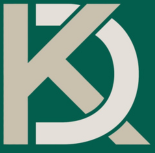“I don’t know what I am going to make.” I hear this statement all the time, and when your business is fairly new, I get it. But even from the very start, you should understand your capacity and availability to predict your revenue. Whether you are a business or a service, you should be able to figure out how much you can make in a given time and create a path to get there.

It is so important that you figure out a predictable revenue at every phase of growth. Using these numbers can help you make the best business decisions regarding whether it is time to scale. The first thing you have to do is get your pricing right. If you need a pricing formula that will help you price any product or service for profit, you can find it in this blog: How Do You Calculate Selling Price? | Entre Money Coach .
Once your pricing is where you need it to be, we can talk about your capacity to make products and services for predictable revenue. I’m going to use a recent example, a client of mine who is starting a coffee roasting business. We calculated his pricing based on operations, cost of the beans, labor, packaging, and shipping. We also figured out both a wholesale and a retail price for his products, because part of his model is to be on consignment in small local stores. Here’s how we went from pricing to predicting monthly revenue:
- Capacity and Availability
Roasting coffee takes a certain amount of time per batch and based on the roasts and origins times can vary. But we averaged the time it takes to roast a batch, and the number of bags of product he can make in each roast cycle. That number alone will limit his capacity to make more than a specific amount of product each day.
So, based on roasting time and resting time before packaging, we calculated the maximum amount of product that can be made per day, and then per week. The cool part is that you can decide how much and how often you work. My client wanted to be part time to start, so the amount of product produced was also determined based on his availability and the number of hours he wanted to work.
- Number of items of each type to sell at each price
My client has two package sizes of roasted coffee beans right now, a 3oz size and a 12 oz size. How many of each size he makes, and sells, each week can help him predict his income. Some will be sold at wholesale, some at retail, with pricing at each size. Based on the number of wholesale and retail orders, plus the product he makes, without orders, to sell that week we can predict how much he will make each week, then month, then quarter. These numbers need to be reviewed at least every quarter.
For example: He sells 20 12 oz bags and 10 3 oz bags in a week.
Ten 12 oz bags at $10.00 wholesale becomes $100.00 and ten 12 oz bags at $14.00 retail is $140.00.
Adding ten 3 oz bags at $2.50 wholesale is $25.00. With this mix of products, he will gross $265.00 this week on 30 total bags, mixed in size and price.
This is his “predictable” revenue. He can make more or less by selling more at a retail price instead of wholesale. This is just one small example of how knowing your “mix” of capacity. That and knowing your availability, audience and price can be brought together on paper. Doing this will allow you to predict how much money you will bring in. I want to note that this isn’t actual sales at this point, but a very solid estimate. You CAN predict your revenue, even as a new business.
Ready to plan your revenue for Q2 2021? Join me Saturday, March 13th for the three-hour Revenue and Profit Planning workshop! Visit https://entremoneycoach.kartra.com/page/quarterlyintensive for more information!

